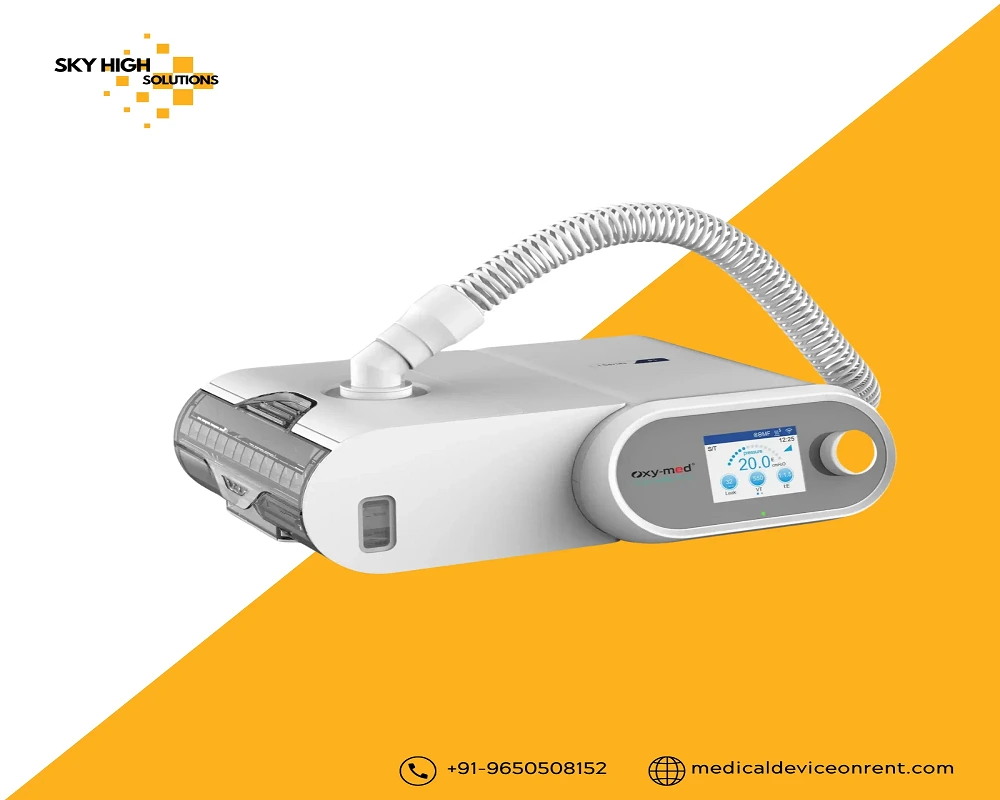If you or a loved one is dealing with sleep apnea, chronic obstructive pulmonary disease (COPD), or other respiratory conditions, a BiPAP machine can be a life-changing piece of equipment. Short for Bilevel Positive Airway Pressure, a BiPAP machine helps users breathe more easily, especially while sleeping. Whether you’re new to this device or looking to improve your comfort and safety, using your BiPAP machine correctly at home is essential.
In this blog, we’ll cover expert tips and practical guidance to help you get the most from your BiPAP machine, from setup to maintenance.
What is a BiPAP Machine?
A BiPAP machine is a non-invasive ventilation device that delivers pressurized air through a mask to assist breathing. Unlike CPAP (Continuous Positive Airway Pressure) machines, which provide a constant pressure, BiPAP machines offer two pressure levels:
-
IPAP (Inspiratory Positive Airway Pressure): Higher pressure when you inhale.
-
EPAP (Expiratory Positive Airway Pressure): Lower pressure when you exhale.
This dual-pressure support makes BiPAP more comfortable for users with complex respiratory issues or those who struggle with CPAP machines.
1. Get a Proper Medical Evaluation
Before using a BiPAP machine at home, it’s crucial to consult with a sleep specialist or pulmonologist. They will evaluate your condition and determine the correct pressure settings based on a sleep study or breathing test.
This ensures that:
-
You are prescribed the right type of machine.
-
Your pressure levels are personalized.
-
Any underlying health issues are identified early.
2. Choose the Right Mask for Comfort
Your mask plays a major role in how effective and comfortable your therapy will be. The three common types are:
-
Nasal masks
-
Full-face masks
-
Nasal pillow masks
Make sure the mask fits snugly but not too tight. An improper fit can lead to:
-
Air leaks
-
Skin irritation
-
Discomfort during sleep
A respiratory therapist or equipment provider can help you try different masks and find one that suits your needs.
3. Follow the Right Setup Process
Setting up your BiPAP machine at home may seem intimidating, but it’s simple if you follow these steps:
-
Place it on a stable surface like a nightstand.
-
Use distilled water in the humidifier chamber to prevent mineral buildup.
-
Connect tubing securely to both the machine and the mask.
-
Power on the device and test airflow before using it.
Make sure the machine’s air filters are clean and positioned away from walls or curtains to allow good airflow.
4. Stay Consistent with Usage
BiPAP therapy is most effective when used consistently every night. Inconsistent usage can:
-
Disrupt your sleep cycle
-
Reduce the benefits of therapy
-
Worsen your breathing condition
Try to wear the mask even during naps if your doctor recommends it. Within a few days or weeks, you’ll start noticing improvements in sleep quality and energy levels.
5. Keep the Machine Clean
Proper cleaning is essential to maintain hygiene and extend the machine’s life. Here’s a simple cleaning schedule:
-
Daily: Wipe the mask and tubing with a clean cloth.
-
Weekly: Wash the mask, tubing, and humidifier chamber in warm, soapy water.
-
Monthly: Check and replace filters if needed.
Always let parts air-dry completely before reassembling.
6. Adjust to the Therapy Gradually
It’s normal to take time to get used to your BiPAP machine. If you find it uncomfortable:
-
Use it while watching TV or reading before bed.
-
Gradually increase the time you wear the mask.
-
Talk to your doctor if you experience bloating, dry mouth, or irritation.
Most issues can be resolved with minor adjustments in pressure or mask fit.
7. Understand the Difference: BiPAP vs CPAP
Many people confuse BiPAP and CPAP machines. Here’s a quick comparison:
| Feature | BiPAP | CPAP |
|---|---|---|
| Pressure Levels | Two (inhale & exhale) | Single constant pressure |
| Comfort | Higher for exhalation issues | Moderate |
| Common Usage | COPD, sleep apnea (complex) | Mild to moderate sleep apnea |
| Cost | Slightly more expensive | More affordable |
Understanding this difference helps you and your caregivers know why BiPAP was recommended in your case.
8. Monitor Your Progress
Many BiPAP machines come with digital displays or apps that track your sleep data. Keep an eye on:
-
Mask leak rates
-
Total usage time
-
Breathing events per hour (AHI score)
Sharing this data with your doctor can help fine-tune your therapy and ensure you’re on the right track.
9. Use Humidification for Added Comfort
Dry air can cause nosebleeds, dry mouth, or sore throat. Most modern BiPAP machines come with built-in humidifiers. Use them to:
-
Prevent nasal congestion
-
Improve mask comfort
-
Reduce airway dryness
Always refill the humidifier with distilled water to maintain its effectiveness.
10. Get Expert Support When Needed
Don’t hesitate to ask for help. Whether it’s a mask fitting issue, troubleshooting a machine alert, or understanding your therapy data—contact your rental provider or doctor for guidance.
Looking for a BiPAP Machine on Rent?
If you’re in Delhi NCR or Gurugram and require respiratory support at home, renting a BiPAP machine is a convenient and cost-effective solution. It’s ideal for patients recovering from surgery, managing chronic illnesses, or testing the therapy before committing to a purchase. For reliable, sanitized, and affordable BiPAP machine on rent, trust a provider like Sky High Solutions to guide you every step of the way.
View More Products:
Final Thought
Using a BiPAP machine at home can greatly improve your breathing and sleep quality when used correctly. With proper setup, regular maintenance, and professional support, you can enjoy safe and effective therapy in the comfort of your home. For assistance or rental inquiries, contact us today at Medical Device On Rent.
Read More Blogs:
Oxygen Cylinders: Types, Uses & Benefits
Infusion Pumps: Types, Uses & Benefits
Best Oxygen Concentrator for Home Use
Best CPAP Machines on Rent in Gurugram
DVT Pump: Uses, Benefits & Price Guide

